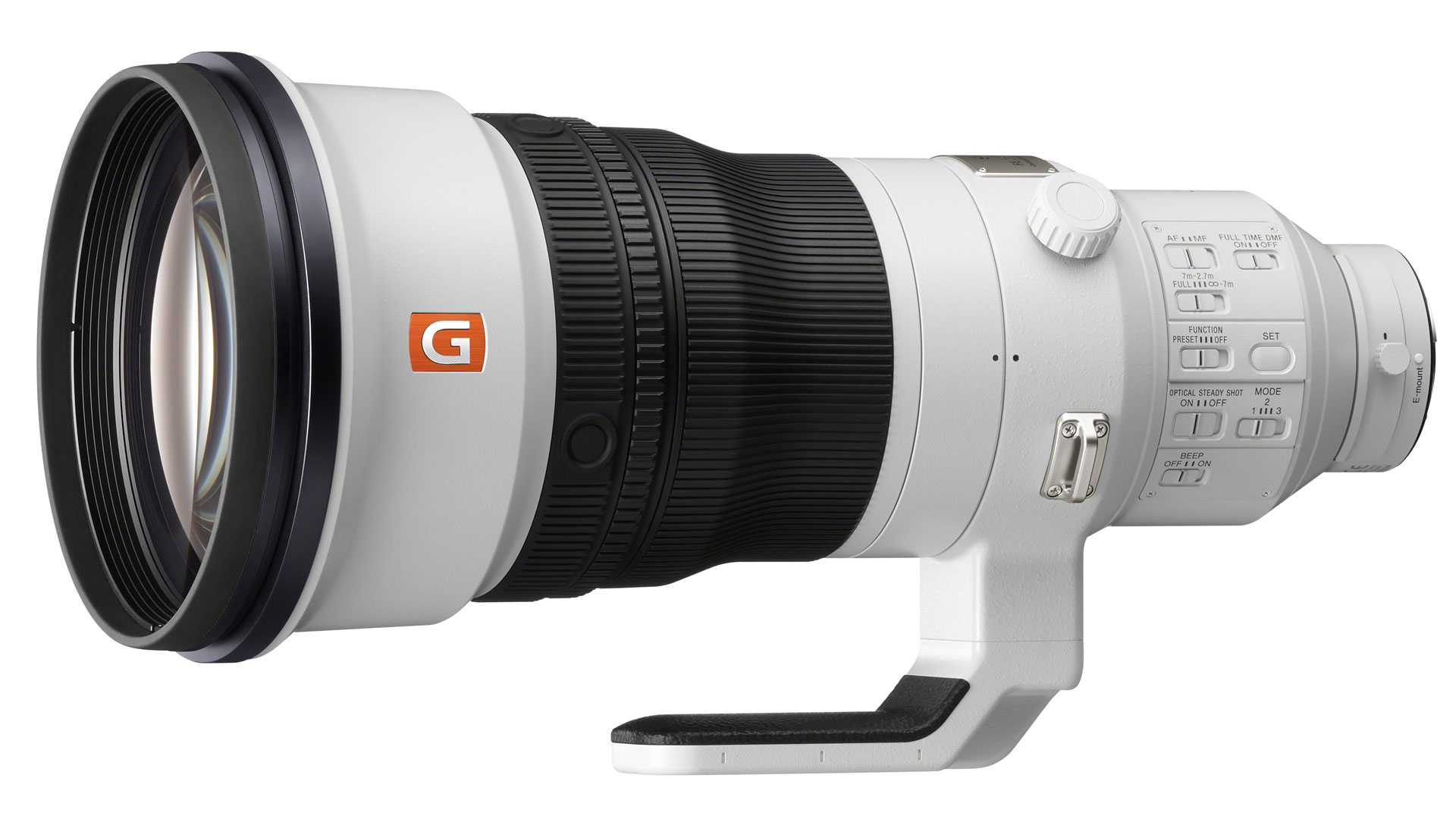Sony FE 400mm F2.8 GM OSS super-telephoto lens officially announced
But you'll have to wait until September to get this professional sport and wildlife lens

For Sony’s full-frame mirrorless A7 and A9 cameras to truly make it in the professional market, they need to have a full range of professional lenses – and that includes big, wide-aperture telephoto prime lenses for long-range, top-quality sports photography.
The new FE 400mm F2.8 GM OSS becomes the first super-telephoto prime in the Sony FE full-frame mirrorless lineup. It’s designed for professional sports, wildlife and nature photographers, and it has a number of features to make it stand out in a highly competitive market.
Physical construction
Sony claims this is the lightest super-telephoto prime in its class, with a weight of 2,879g. That sounds a lot but actually isn’t, in a sector where equivalent Canon and Nikon DSLR lenses weigh closer to 4kg.
And that’s not all. The new Sony lens has been designed with a reduced number of optical elements near the front of the lens to reduce the front-heavy balance typical of this type of optic, so that the moment of inertia – the effort needed to quickly turn and pan with such a big lens – is much reduced.
Lenses like this will often be used in harsh environments, so the FE 400mm F2.8 GM OSS is designed to be durable too, with extensive use of magnesium alloy components, dust- and moisture-resistant seals, a front element coated with fluorine to resist dirt and fingerprints, and a strong and lightweight carbon fiber hood.
Optical design
Professionals who invest in lenses of this class will expect the highest standards of optical performance, and Sony makes bold claims for the image quality of its new lens, citing the use of three fluorite elements to minimise chromatic aberration and colour bleeding, and describing “exceptional image quality” and “outstanding contrast and resolution” all the way into the corners of the frame.
Fast super-telephoto primes are often used wide open to separate a sharply focused subject against a defocused background, and the FE 400mm F2.8 GM OSS uses an 11-blade circular diaphragm mechanism for natural-looking background bokeh.
Get the Digital Camera World Newsletter
The best camera deals, reviews, product advice, and unmissable photography news, direct to your inbox!
It also has a drop-in filter slot at the rear for 40.5mm ND filters, which are used for reducing light levels and allowing wide apertures even in bright light, and a drop-in polariser (£420) will be available from December 2018, which can be rotated and adjusted while in position.
The new lens will be compatible with Sony’s 1.4x and 2.0x E-mount teleconverters to offer increased focal lengths of 560mm (at f/4.0) and 800mm (at f/5.6) respectively, while still delivering “outstanding” optical performance.
Advanced autofocus
Autofocus performance isn’t governed just by the camera’s own autofocus system, but the speed and design of the autofocus actuators in the lens itself. The Sony FE 400mm F2.8 GM OSS comes with two newly developed, high-speed XD (extreme dynamic) linear motors to drive the focus group within the lens. Combined with specially developed motion algorithms, this provides claimed improvements in motion-tracking, allowing photographers to capture dynamic, fast-moving subjects more easily.
Externally, the FE 400mm F2.8 GM OSS has a full-time DMF (Direct Manual Focus) switch, customisable focus hold buttons in four locations and a function ring with selectable settings. It also has an optical stabilisation system with three modes, including a new Mode 3 featuring an “advanced algorithm” to help with the framing of rapidly moving subjects.
Sony A9 owners will need to install this camera’s Version 3.00 software update to add support for this lens with optimised stabilisation and continuous shooting.
The bad news is the price, which is approximately £10,500, or $12,000, together with the fact that the new lens won’t ship until September and that it will be made to order. The price, in fairness, is in line with Nikon and Canon equivalents, and you would hardly expect to be able to pick up a lens like this in a high-street store.
We will get a chance to shoot with this lens very shortly, so we'll post hands-on impressions and sample images as soon as we have them.
Read more: Sony A9 review

Rod is an independent photography journalist and editor, and a long-standing Digital Camera World contributor, having previously worked as DCW's Group Reviews editor. Before that he has been technique editor on N-Photo, Head of Testing for the photography division and Camera Channel editor on TechRadar, as well as contributing to many other publications. He has been writing about photography technique, photo editing and digital cameras since they first appeared, and before that began his career writing about film photography. He has used and reviewed practically every interchangeable lens camera launched in the past 20 years, from entry-level DSLRs to medium format cameras, together with lenses, tripods, gimbals, light meters, camera bags and more. Rod has his own camera gear blog at fotovolo.com but also writes about photo-editing applications and techniques at lifeafterphotoshop.com
